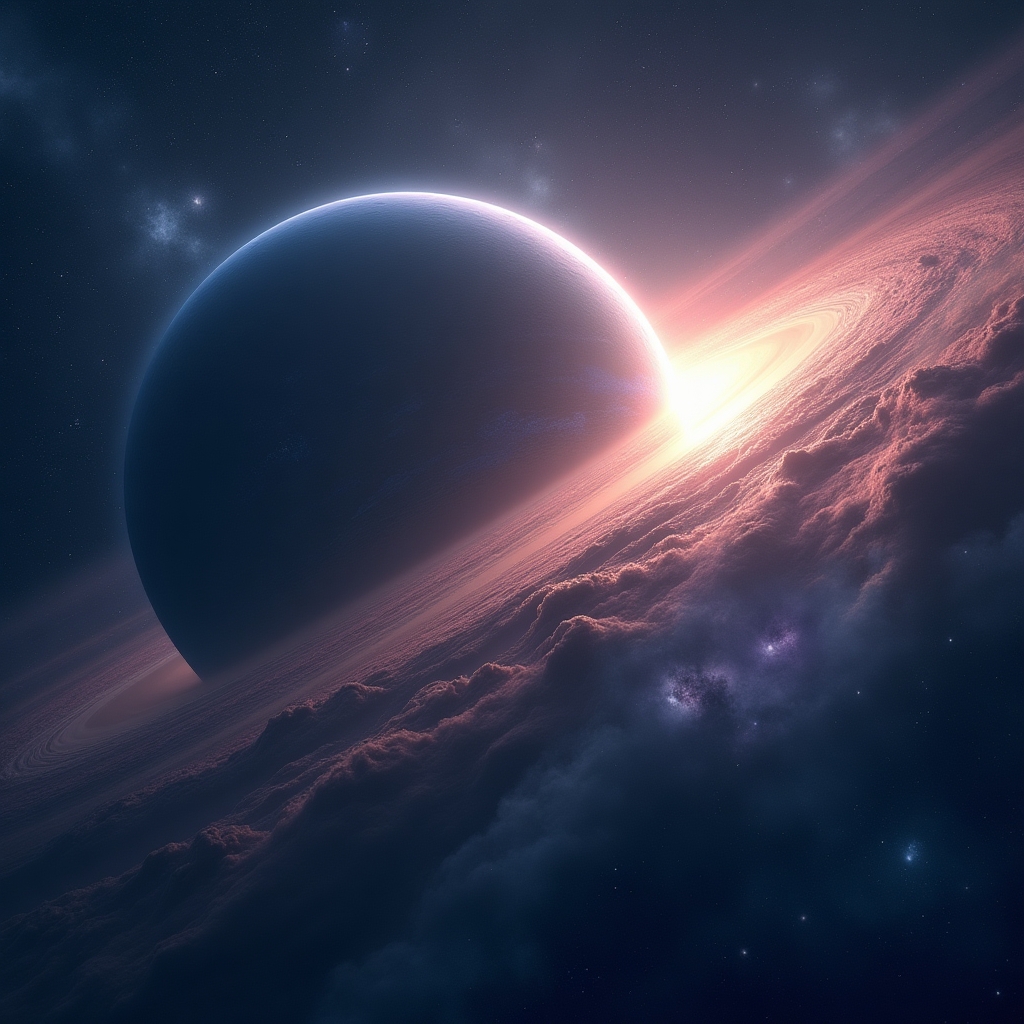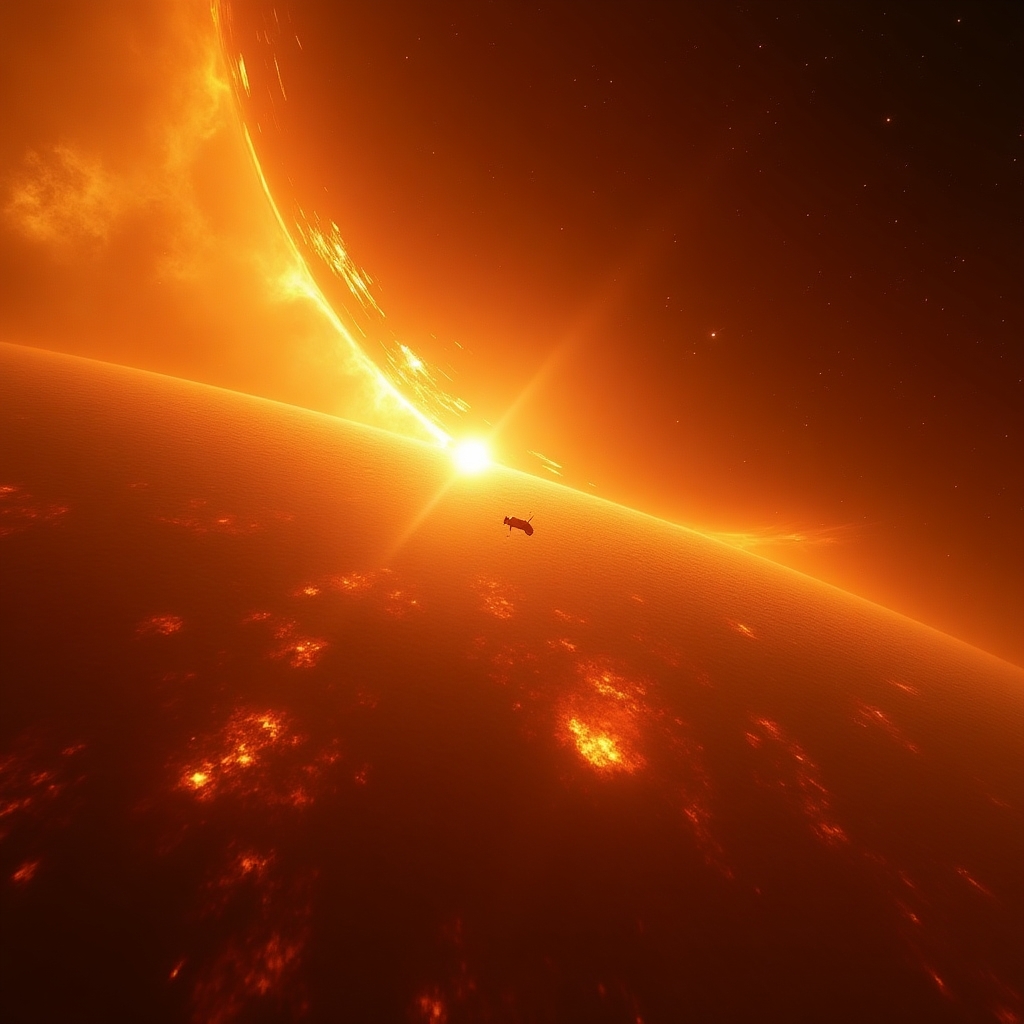In the dark expanse of our universe, a discovery emerges that turns our cosmic understanding on its head. Astronomers have identified a giant planet orbiting in reverse around one star in a close binary system. But let me explain, this isn't just any orbit—it's a celestial dance previously thought impossible. This revelation shakes the foundations of our understanding of how planets form and evolve. (According to Science Daily, https://www.sciencedaily.com/releases/2025/08/250802022933.htm).
iN SUMMARY
- 🚀 Unprecedented Orbit: A planet orbits backward in a binary system.
- 🔭 Second-Generation World: Possible origins from debris of a white dwarf.
- 🌌 New Exoplanetary Era: Challenges traditional planet formation models.
- 🌟 Cosmic Curiosity: Opens doors to new astronomical research.
The Ghost Star and its Peculiar Companion
In this extraordinary binary system, one star has evolved into a faint white dwarf, having shed most of its mass billions of years ago. A white dwarf is a stellar remnant, the remnants of a star that has exhausted its nuclear fuel and expelled its outer material. (Learn more about this topic on Wikipedia).
This system's other inhabitant, a giant planet, stands as a potential second-generation world—perhaps born from or captured by the spewed debris of the dying white dwarf neighbor. The finding, as detailed by Science Daily, offers valuable insights into the little-understood realm of planetary systems formed through exceptional cosmic circumstances. (Science Daily).
Understanding the Reversed Orbit
Think of it this way. In most planetary systems, planets orbit in the same direction that their star rotates. This principle is deeply engrained in the typical process of star and planet formation. However, our newfound planet defies this common setup with an orbit that wends backward relative to the binary system's primary star. It's as if the planet decided to go against the grain, defying the celestial norms.
Unfolding the Mystery: Advanced Astronomical Tools
This remarkable discovery wouldn't have been possible without modern observational technologies. Researchers utilized advanced telescopes and spectrographs, which allow scientists to observe with high precision and develop detailed insights into distant celestial bodies. Instruments like these are crucial for uncovering the hidden details of the universe.
The Second-Generation Wonder
The concept of a second-generation planet is quite captivating! It implies that the planet we see today was either born from the aftermath of stellar death or later captured by the gravity of the remnant white dwarf. The debris ejected during the white dwarf's formation might have gathered into a disk, eventually forming this planet. Such a post-stellar world offers a fascinating glimpse into celestial reincarnation processes.
This notion guides a significant revision of our traditional planet formation theories, paving the way for new models and evolutionary scenarios.
Implications for Exoplanetary Science
One might ask, why does this matter? What would you do if you discovered a puzzle piece in your understanding of the cosmos that didn’t fit? This finding nudges astronomers to rethink established theories of planet formation and raises questions about the survival of planetary systems through massive stellar transformations.
The insights gained from studying this unique system could redefine what we know about how planets coexist and change alongside their stellar partners, potentially leading to groundbreaking developments in exoplanetary science.
Join the Conversation
This discovery gives us more than a new cosmic conundrum—it offers an invitation to marvel at the universe's complexity and resilience. Could this inspire new explorations of planetary origins or perhaps fuel your interest in the infinitely mysterious field of astronomy?
As inhabitants of the vast universe, what peculiar planetary phenomena do you think might await future discovery? Share your thoughts and join the debate here in the iNthacity community, your "Shining City on the Web" (iNthacity). Become a part of this exploration journey and dive deeper into the unknown.
When it comes to exploring the cosmos, it seems our universe is full of surprises waiting to greet us. Who knows! Perhaps the next great cosmic revelation is closer than we think, offering hope and discovery in equal measure.
Online resources can greatly enhance your understanding of this topic. Consider visiting NASA's Exoplanet Archive for more information about planets beyond our solar system.
Whether reading about extraterrestrial wonders or simply pondering our place in the cosmos, each discovery invites us to imagine endless possibilities. Stay curious and keep an eye on the stars—they’re telling stories just for us!
Disclaimer: This article may contain affiliate links. If you click on these links and make a purchase, we may receive a commission at no additional cost to you. Our recommendations and reviews are always independent and objective, aiming to provide you with the best information and resources.
Get Exclusive Stories, Photos, Art & Offers - Subscribe Today!
























Post Comment
You must be logged in to post a comment.